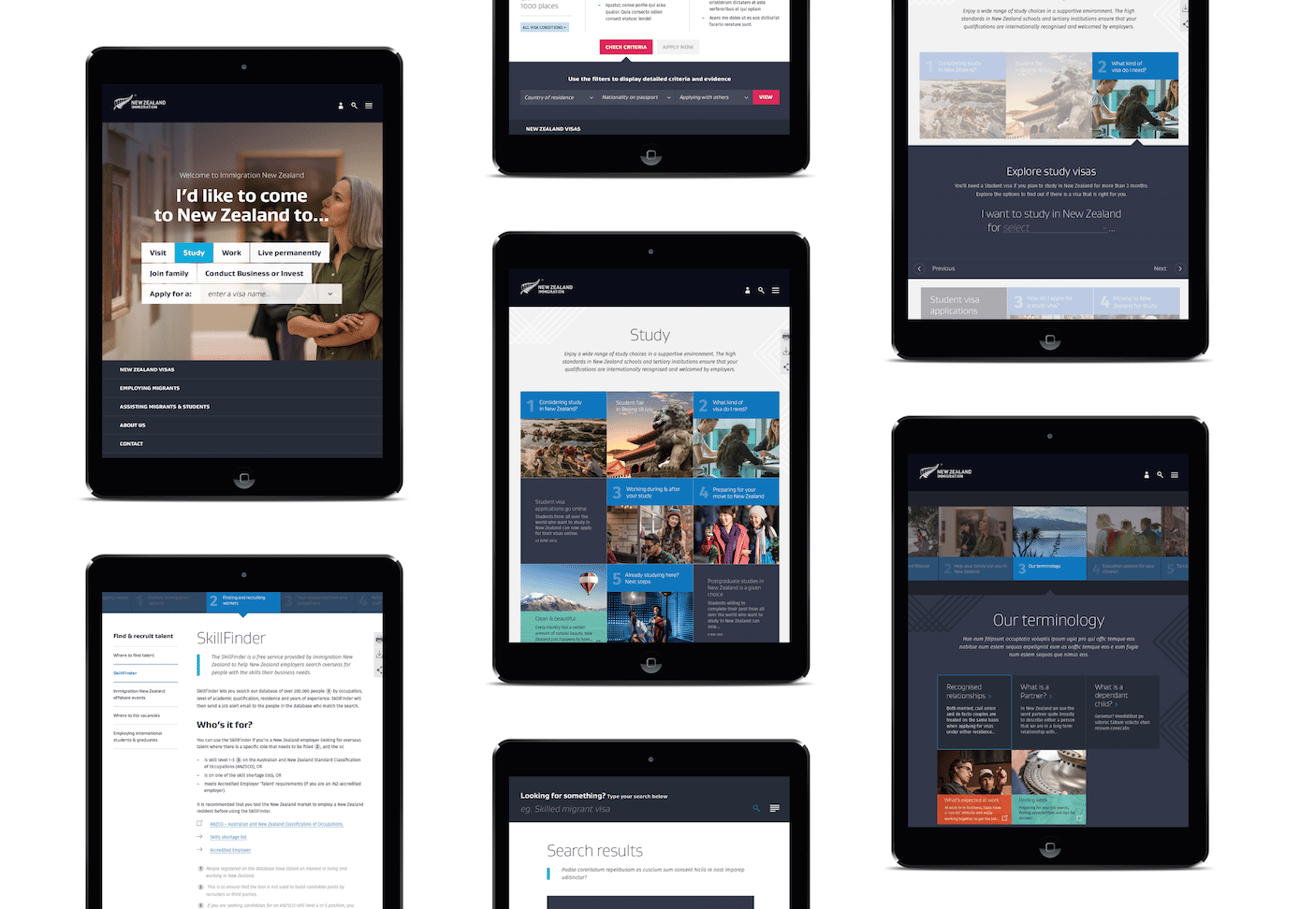Designing a new way into New Zealand: DNA on forging interaction design forward in Aotearoa

If you’re a foreigner looking to come live in the land of the long white cloud, Immigration New Zealand’s website is most likely your first port of call.
The site is one of the most frequented in the country with over 32,000 unique visitors daily, as well as a whopping 12 million people over the past year.
Prior to April 2016, Immigration New Zealand had four different websites that covered various aspects of immigration, from getting a visa to preparing to move to New Zealand.
There was a huge amount of information for users to understand, which is where interaction design agency DNA stepped in.
DNA was brought on board to do a website revamp and simplify the vast amounts of information relating to hundreds of visas. Once they were engaged the job turned out to be slightly bigger than expected.
The project began with a user research stage to understand their current experience with Immigration New Zealand, as well as their motivations for choosing New Zealand and their needs and goals throughout the journey.
The agency carried out 51 interviews across different migrant segments and industry sectors, resulting in 6 personas, each with a current state journey map and ideal service experience map, as well as 17 profiles.
“The research played a pretty key role in shifting the organisation’s thinking about what users required,” Interaction design director Charlene Turei says.
“When we first started out discussing what the site needed to do, Immigration New Zealand, like many organizations, had a more introspective way of looking at how they presented information.
“They had information organised into visa categories, but what we found in the research is that people had strong underlying motivations – though they did want to come to New Zealand to study or for work, a key reason they’d choose New Zealand over a competitor like Canada or Australia was a change in lifestyle. That was not something that immigration had really thought about in terms of what that meant for people.”
Turei says often, peoples’ journeys consisted of a sequence of different visas, many of which were gap fillers on a pathway to bigger goal such as residency, but which on reflection by Immigration were unnecessary.
“They could’ve been on the right visa sooner with stress and money wastage reduced, so the thing we really wanted to concentrate on in the design was looking at the complexity of the visa system.”

She says the main goal with the design of the website was to make it more user friendly by removing the complexities, rather than expecting someone to wade through hundreds of pages of visa information.
DNA designed a data-model driven website instead of template driven pages, based around motivations, where users could explore and compare different visas based on their situation.
On the landing page, it says: ‘I’d like to come to New Zealand to …’ followed by six options: to visit, study, work, live permanently, join family or start a business or invest.
Turei says despite visitors to the website hailing from all over the world, the design was built around a breadth of shared needs.
“What we found in the research was that even though people have quite diverse backgrounds, there was a core set of needs and goals across the spectrum, so by focusing on those shared needs it gave us a clear purpose and vision to aim for,” she says.
Since the re-design, there’s been an increase in digital visa applications over paper based visa applications, as well as a big drop in eligibility-related calls to the call centre.

Feedback has also been great, Turei says, with some taking the time to email in to say what a pain-free process using the site has been.
DNA was a finalist for its work on the Immigration New Zealand site in the 2017 global Interaction Design Awards held in New York in February this year.
Turei says being a finalist was a big accomplishment, considering the number of people that made submissions globally.
“The thing that stood out for me is when you look at the global stage of interaction design, websites are less of a focus. It’s often all about how the practice is used across a diverse range of interaction experience including new technologies, product, application and spatial design, so to be recognised for work on a website was quite an achievement.”
She says it was also the only project from the Australasia region to be recognised this year.

In terms of the interaction design industry in New Zealand, Turei reckons the country is lagging a few years behind the rest of the world.
“But I think interaction design is becoming more prevalent in New Zealand and people are starting to see it’s not just about usability testing and user experience, it’s a broader context of thinking around how things fit into people’s lives, designing for context and dealing with complexities,” she says.
Part of the reason behind New Zealand trailing behind on the global stage may come down to isolation, she says, but another reason is companies can often be unwilling to venture into new territory and try new things.
“Clients like to feel comfortable with a process and to see what’s happening, so introducing new ideas can be challenging,” she says.
“To Immigration New Zealand’s credit, they were willing to do the work that was required. It was significantly harder than what they set out to do, but once they saw the insights and how we could completely change that experience for users, they were committed to do it right.”
“Hopefully more companies – private and public – will see this value and be more open to change.”




